Take one part Diana Vreeland, a sprinkle of Funny Face’s Maggie Prescott, and a healthy glug of Buster Keaton, and you might come close to approximating the force of nature that is Marian McEvoy. The magazine-world legend cut her teeth at WWD and W in Paris in the 1970s, was the editor in chief of Elle Decor and House Beautiful, palled around with the likes of Lagerfeld and Saint Laurent—and would rather eat her garden wellies than rehash her long list of style bona fides.
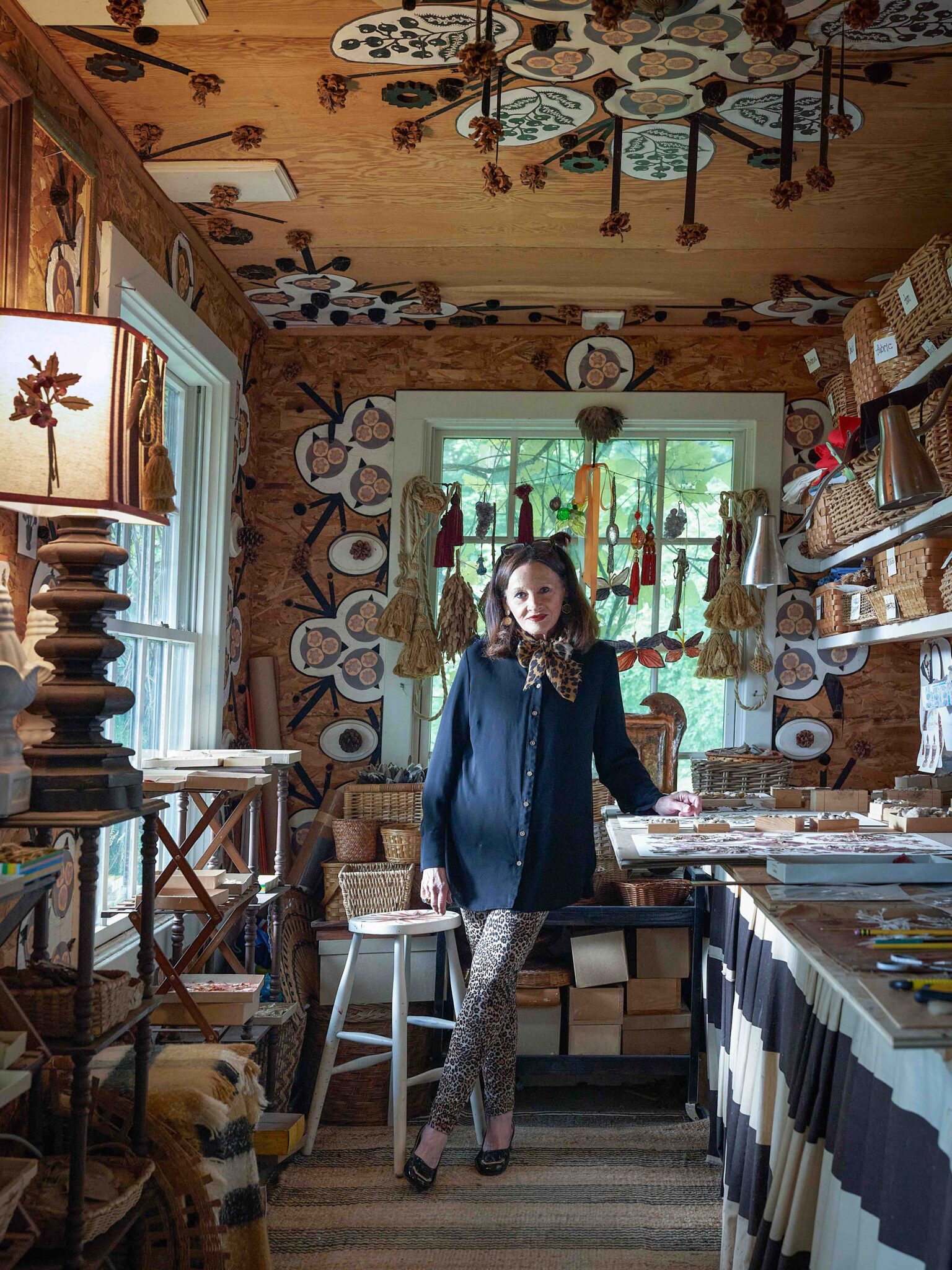 An exemplar of following your bliss before that was even a thing (she abandoned the flash-and-dash worlds of fashion and media for the crickets-and-dove-coos of the Hudson Valley more than 20 years ago), she has lately earned a following for her botanical collages, drawings, and self-described “corkillage”—objets made from wine corks—that she likens to folk art.
An exemplar of following your bliss before that was even a thing (she abandoned the flash-and-dash worlds of fashion and media for the crickets-and-dove-coos of the Hudson Valley more than 20 years ago), she has lately earned a following for her botanical collages, drawings, and self-described “corkillage”—objets made from wine corks—that she likens to folk art.
But don’t call her an artist: unconcerned with cerebral philosophies, her irreverent, organic one-offs are shot straight from the hip, and her only modus operandi is an unstudied, off-kilter beauty. It’s a body of work that matches whimsy with sophistication, celebrates the handmade and accidental, and eschews perfection in favor of perspective. Now, it’s also the springboard for a new collection of fabrics and wallcoverings for Schumacher that’s as one-of-a-kind as she is. We went behind the scenes to find out how she used it in her own upstate home.

LIVING ROOM: I call this the winter room. It’s a cocktail space and the occasional guest bedroom with a giant fireplace, which is really nice when there’s snow on the ground. The daybed is a 19th-century copy of an 18th-century piece that I painted white after I stained it with black shoe polish and thought, Oh no, this looks like a hearse! The Thistle Vine fabric (on left and right pillows) is a naïve interpretation of a spiky botanical that can’t possibly happen in real life and has a little more oomph than a rounded flower. It would also be great as curtains. And I used my Pretty Petals fabric to make appliqués for the pillow in the middle.
-
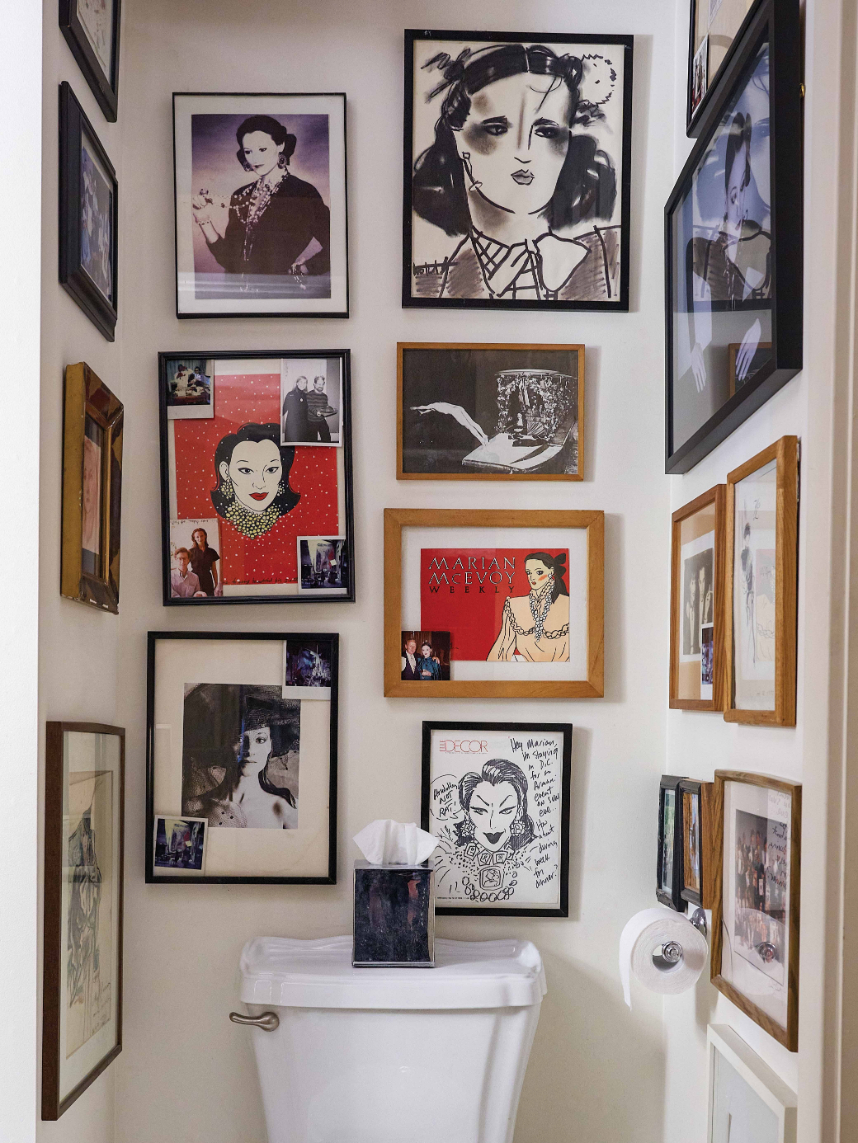 Paul Costello
Paul Costello -
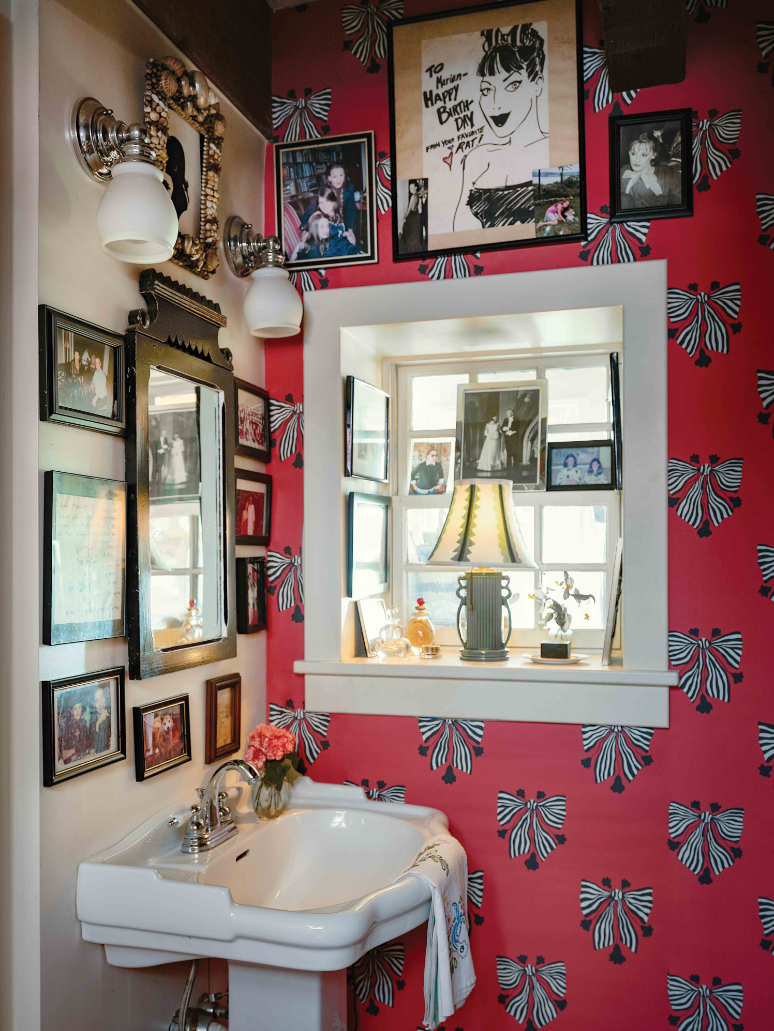 Paul Costello
Paul Costello
POWDER ROOM: I refuse to do silver-framed portraits on a table or piano, so the powder room is my place for that. It has sketches of me by Karl Lagerfeld, and one by Yves Saint Laurent—he sent an illustration of me wearing a hat after I did some review he liked. There are pictures of me with Madison Cox and Joan Juliet Buck, and photos by David Seidner and Paolo Roversi. “I call these my walls of shame”—I’m only half joking. I covered another wall in my Bow-Wow-Wow wallpaper. I love bows. God, when I was in Paris, I had a bow on every day—in my hair, around my waist, on my shirts and shoes. But I don’t like them cutesy or too perfect—I am not a ladybugs-and-kittens kind of gal— and they need something strong and graphic to keep them from getting saccharine. These bows are meant to look like you tied them yourself, and the black and white makes it more grown-up. The stripes wiggle-waggling all over the place highlight the imperfections.

DINING ROOM: The dining room is small and I didn’t think it could handle a big color or it would compete with the living room, where there are a ton of reds. We’re not going for Pee-Wee’s Playhouse here. To that end, I installed framed panels of Tendril Stripe wallpaper, which is a take on basic vines. It reads kind of like a tweed or a houndstooth jacket, not tricky or flamboyant. It’s not a movie star; it’s a solid background player that looks good in all kinds of colors and schemes. Once in a while, doing something simple is not a bad idea.
-
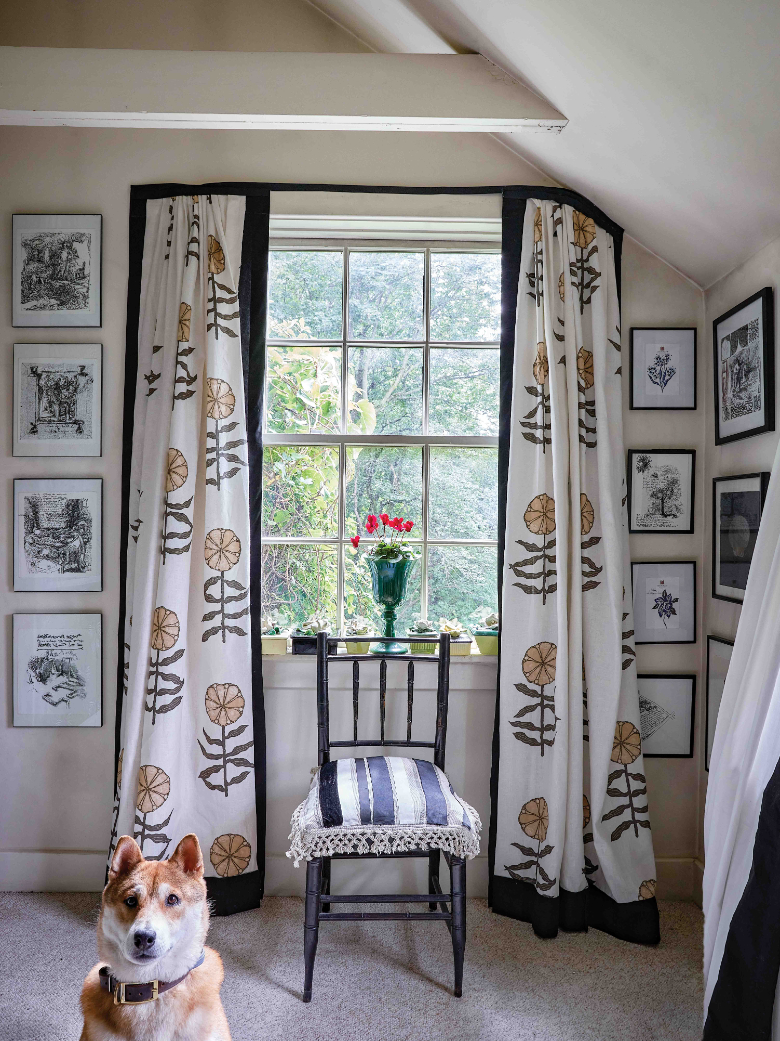 Paul Costello
Paul Costello -
 Paul Costello
Paul Costello
BEDROOM: To be honest, I had imagined this Pretty Petals fabric flat on a cushion or a bed or a table, but seeing it hanging from a window in my bedroom made me fall in love with it all over again. There are the folds in the pleats, so it’s not perfect—obviously a plus in my book—and since it’s gathered at the top, you can’t see what’s going on until it spills out at the bottom. It gives you layers and dimension and makes it a whole different ball game. That’s Nicky the Shiba Inu in the foreground. He’s very naughty, but I adore him.
MUDROOM: You can see the Thistle Vine fabric on the bench, this time with a red ground. If you have black and white, you can add practically any other color and it will work: pink, navy, green. It’s how you mix it. There is no terrible color—that’s a myth. And dear Lord, give me high contrast! I don’t like smushy, smoky, indefinite designs.
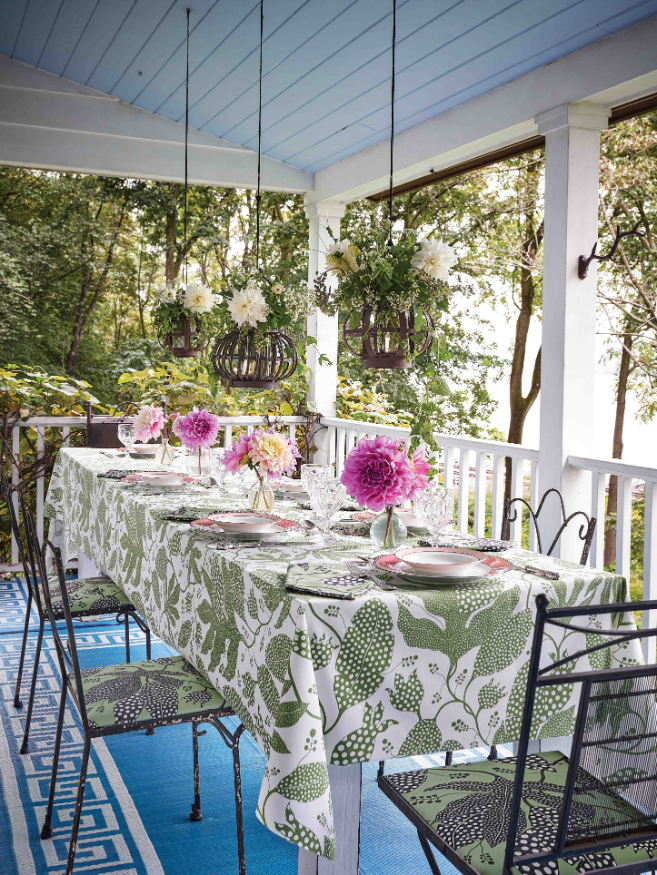
DINING PORCH: I used two colorways of the Polka Dot Jungle fabric here. The one on the seat cushions adds black to a green ground, and it coordinates with the version on the table without getting matchy-matchy—brilliant. Something always has to look a weensy bit “off” or it doesn’t work. I came to green very late in life, but there are so many different shades—way more than blues or reds—and now I’m a convert.
THIS ARTICLE ORIGINALLY APPEARED IN VOLUME 11 OF FREDERIC MAGAZINE. CLICK HERE TO SUBSCRIBE!
















